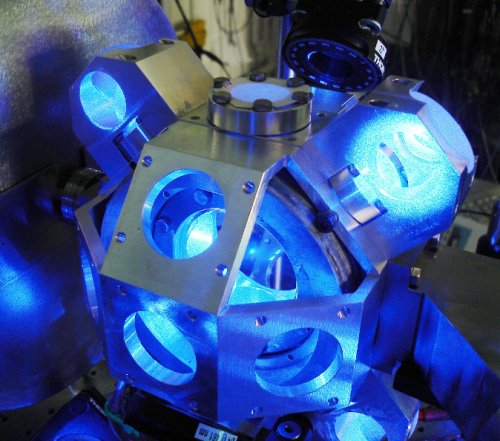We know there are 24 hours in a day, 60 minutes in an hour, 60 seconds in a minute, and so on and so forth, but how much do we really know about seconds?
Back in 1967, the International Committee for Weights and Measures defined a second as 9,192,631,770 cycles of radiation corresponding to the transition between two hyperfine levels of the ground state of the caesium 133 atom.
Researchers from the Paris Observatory have been testing two optical lattice clocks (OLC) that use laser beams to shoot strontium atoms that oscillate much faster than cesium atoms. The new clocks allow scientists to divide time into smaller intervals to achieve even more accurate measurements of the second.

Optical lattice clock tested by Paris Observatory researchers. (Image via Observatoire de Paris / SYRTE)
Lead researchers Jerome Lodewyck and Rodolphe Le Targat are saying that this atomic clock is about 100 times more accurate than the atomic clocks used to sync the world’s watches today.
According to National Geographic , if a clock with the optical lattice clock’s accuracy had been ticking at the time of the Big Bang, about 13.8 billion years ago, it would have lost only about 46 seconds to date.
How important is a second?
If you’re thinking that seconds don’t mean much, think again. If you've ever watched the Olympics, you know that a tenth of a second can make the difference of a whole gold medal, but take a look at these interesting stats, as well:
1. It takes just 0.1 second for a computer user to feel that his/her computer is reacting instantaneously. (Nielsen Norman Group)
2. Your brain actually pauses for up to 450 milliseconds every time you blink. (University of Tokyo)
3. Humans blink about 15 to 20 times per minute, that’s a blink every 4-5 seconds. (NBC)
4. Bees can flap their wings as fast as 11,000 times per second. (Hives for Lives)
The future of time
An atomic clock with these capabilities could be used to investigate some of nature’s constants and see if they are, in fact, “constant,” or if they change over time.
A time as accurate as the one suggested by Lodewyck and Le Targat could potentially have an impact on space studies and physics, but also on out modern day gadgets and devices. Imagine enhanced real-time responses on your phone, Internet, and Skype or better synchronization of your GPS maps.
Advertisement
Learn more about Electronic Products Magazine





